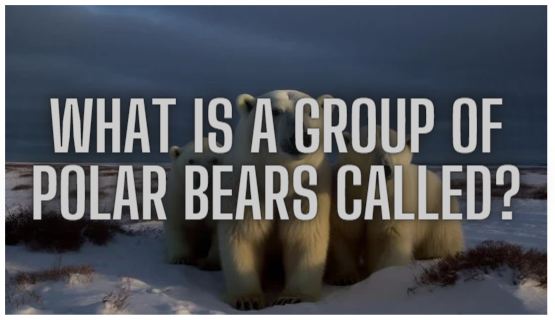Polar bears (Ursus maritimus) are solitary animals, spending much of their lives in isolation. However, there are occasions when polar bears come together in specific circumstances, leading to the formation of a group. In this article, we will delve into the collective identity of a group of polar bears, exploring their social dynamics, common gatherings, and the terminology used to describe these assemblages.
Solitary Nature of Polar Bears
Polar bears are known for their predominantly solitary lifestyle. They typically roam vast Arctic territories in search of food, mates, and suitable denning sites. This independent behavior is an adaptation to the sparse resources and vast distances of their habitat.
Maternal Associations
One of the few instances when polar bears exhibit social behavior is during maternal associations. Female polar bears, or sows, often form temporary groups with their cubs. This occurs when sows and their dependent cubs congregate in areas with abundant food resources such as seal hunting grounds. These associations provide protection for the cubs and allow them to learn vital survival skills from their mothers.
Mating Behavior and Temporary Associations
During the mating season, adult polar bears engage in temporary associations. Male polar bears, or boars, may follow the scent trails of receptive females, leading to short-term gatherings. These interactions can be territorial and involve competition between males vying for mating opportunities.
Terminology: Group Names
While there is no specific term for a group of polar bears recognized universally, different names have been used to describe certain collective situations:
Aurora: In some indigenous cultures, a group of polar bears is referred to as an “aurora” or “aurore.” This term signifies the awe-inspiring beauty and mystique associated with polar bears and their habitat.
Celebration: Another term sometimes used to describe a gathering of polar bears is a “celebration.” This name highlights the rarity and significance of multiple bears coming together in one location.
Pack or Sleuth: Although more commonly associated with other bear species, such as grizzly bears, the terms “pack” or “sleuth” have occasionally been used to describe a group of polar bears. However, these terms are not widely recognized or commonly applied to polar bears.
Final Thoughts
Polar bears are typically solitary animals, but temporary associations do occur in specific situations such as maternal groups and mating interactions. While there is no universally recognized term for a group of polar bears, the limited social interactions they engage in provide unique insights into their behavior and adaptation to the challenging Arctic environment.

